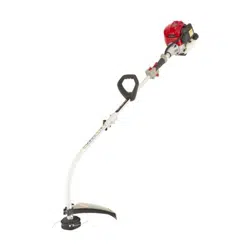Loading ...
Loading ...
Loading ...

EN - 2
2. SAFETY REGULATIONS
2.1 TRAINING
Become familiar with the controls
and the proper use of the machine. Learn
how to stop the machine quickly. Failure
to follow the warnings and instructions
may result in re and/or serious injury.
• National regulations can limit machine use.
• Never allow children or persons unfamiliar with
these instructions to use the machine. Local
regulations may restrict the age of the operator.
• Never use the machine if the user is tired or
unwell, or has taken medicine, drugs, alcohol
or any substances which may slow their
reexes and compromise their judgement.
• Bear in mind that the operator or user is
responsible for accidents or unexpected
events occurring to other people or their
property. It is the user’s responsibility to
assess the potential risk of the area where
work is to be carried out and to take all the
necessary precautions to ensure his own
safety and that of others, particularly on slopes
or rough, slippery and unstable ground.
• If the machine is sold or lent to others,
make sure that the operator reads the user
instructions contained in this manual.
2.2 PRELIMINARY PROCEDURES
• Always wear slim tting protective clothing
with slash-proof protection, anti-vibration
gloves, helmet, protective goggles, half-
mask respirator, protective earplugs, cut
resistant safety boots with non–slip soles.
• Never wear scarves, shirts, necklaces,
bracelets, loose owing clothing, laces or
ties or any hanging or apping accessory
that could catch in the machine or in any
objects or materials in the work area.
• Tie your hair back if it is long.
• Thoroughly inspect the entire work area and
remove anything that could be thrown by the
machine or damage the cutting means/rotating
units (stones, branches, iron wire, bones, etc.).
DANGER! Petrol is highly ammable.
– Keep the fuel in approved fuel
containers, in a safe place, away from
any naked lights or heat sources.
– Keep the containers out of
the reach of children.
– Keep the fuel containers free of grass
cuttings, leaves, or excessive grease.
– Do not smoke when lling up with
fuel or when handling the fuel.
– Use a funnel to top up with
fuel only in the open air.
– Do not inhale fuel fumes.
– Never remove the tank cap or add
fuel whilst the engine is running
or when the engine is hot.
– Open the fuel tank slowly to allow the
pressure inside to decrease gradually.
– Do not approach the tank opening with
a naked ame to check its contents.
– if you have spilt some fuel, do not attempt to
start the engine but move the machine away
from the area of spillage and avoid creating
any source of ignition until the fuel has
evaporated and fuel vapours have dissipated.
– Replace caps of all fuel tanks
and containers securely.
– Immediately clean up all traces of fuel
spilt on the machine or on the ground.
– Never start the machine in the same
place in which you relled it with fuel; the
engine must be started in an area at least
3 metres from where you refuelled.
– If fuel is spilt on clothing, change
clothing before starting the engine.
2.3 DURING OPERATION
• Do not operate the engine in a conned space
where dangerous carbon monoxide fumes
can develop. All starting operations must be
carried out in an open or well ventilated area.
Always remember that exhaust fumes are toxic.
• When starting up the machine, do not direct
the silencer and therefore the exhaust
fumes towards ammable materials.
• Do not use the machine in environments at
risk of explosion, in the presence of ammable
liquids, gas or powder. Electrical contacts
and mechanical friction can generate sparks
that can ignite the powder or vapours.
• Work only in daylight or with good articial
light in good visibility conditions.
• Keep persons, children and animals away
from the working area. Ask another adult
to keep the children under supervision.
• Check that there is nobody within 15
metres of the machine’s range of operation
or within 30 metres for heavier cutting;
• Where possible, avoid working on
wet, slippery ground or in any case on
uneven or steep ground that does not
guarantee stability for the operator;
Loading ...
Loading ...
Loading ...
